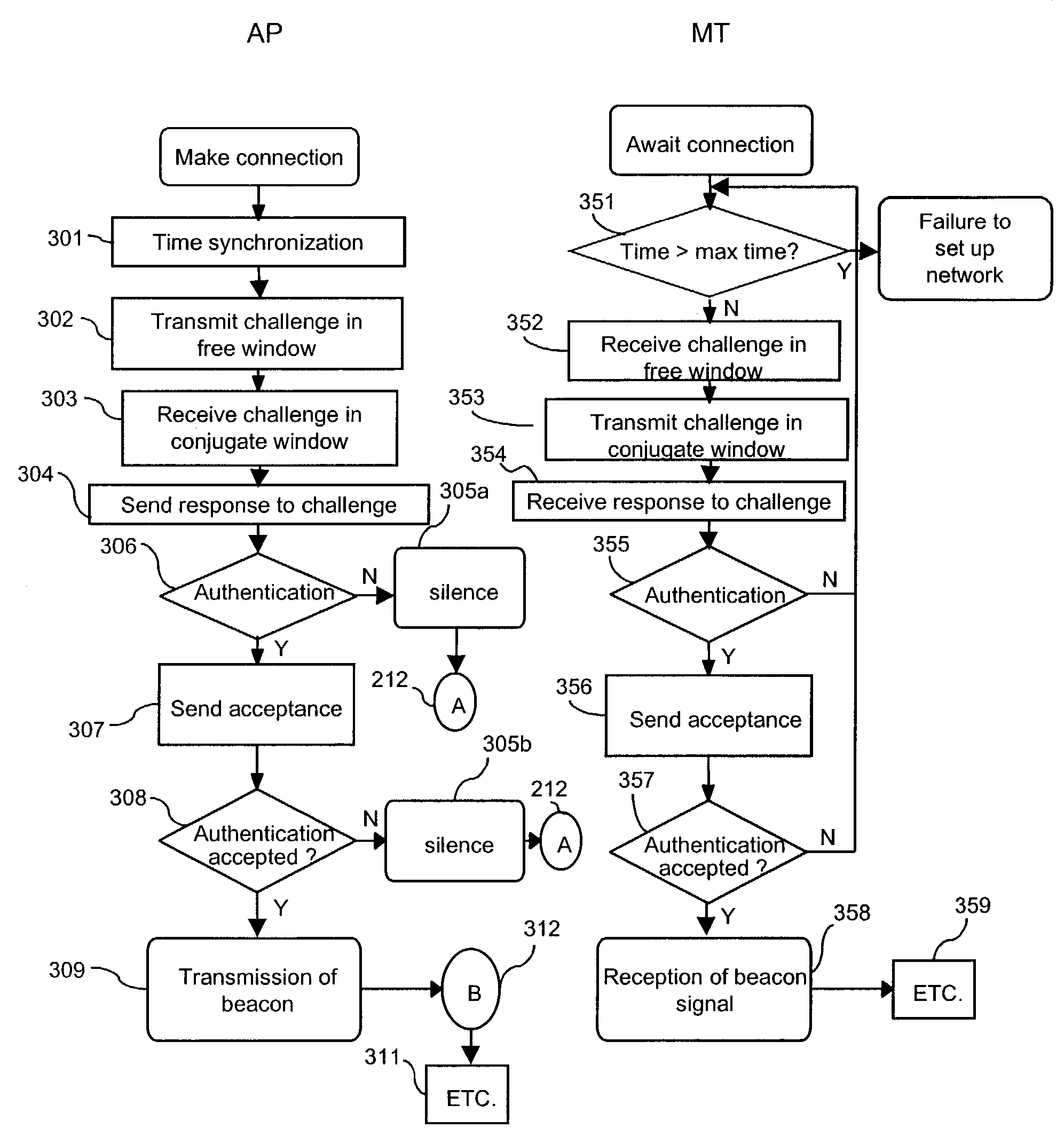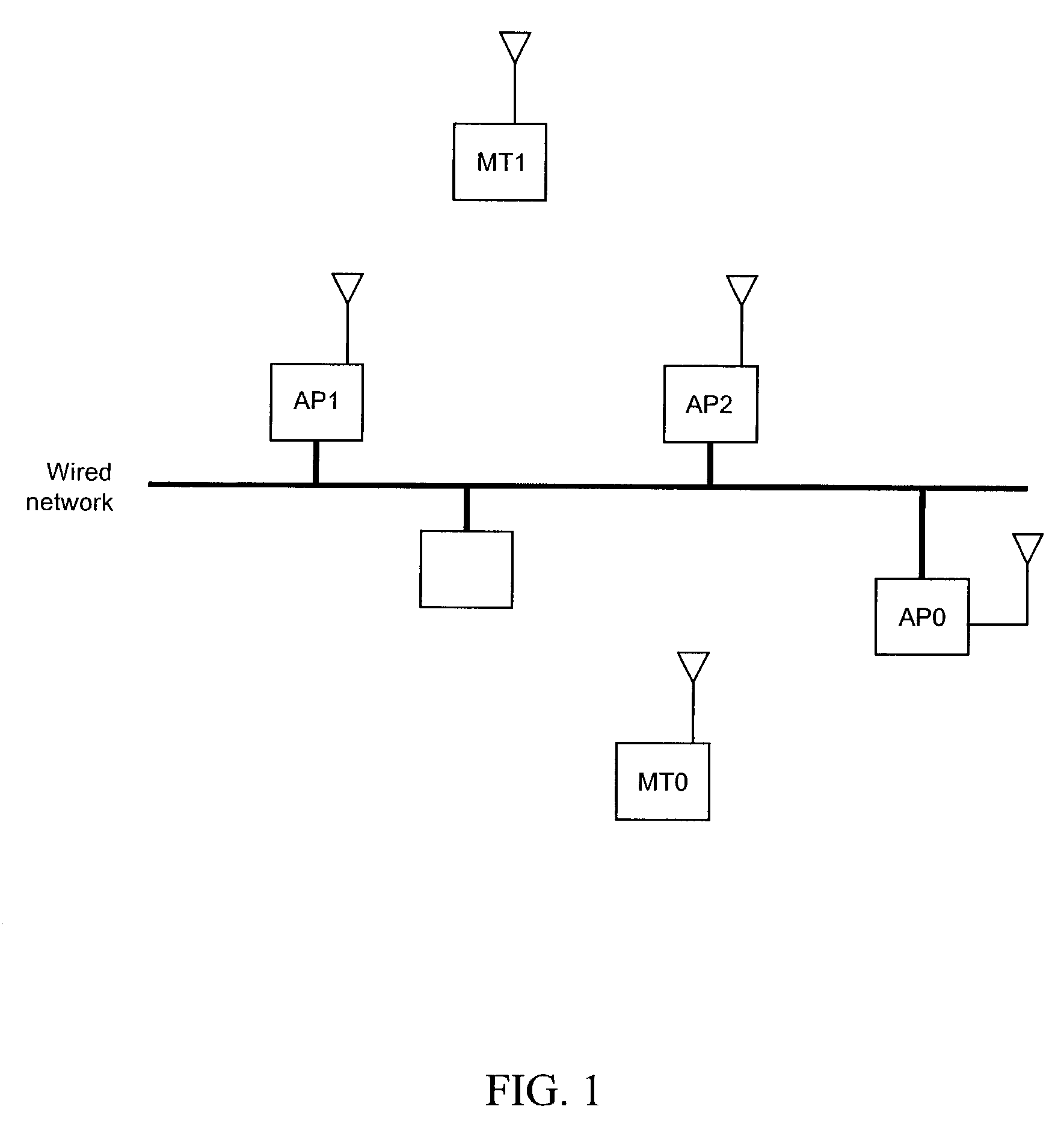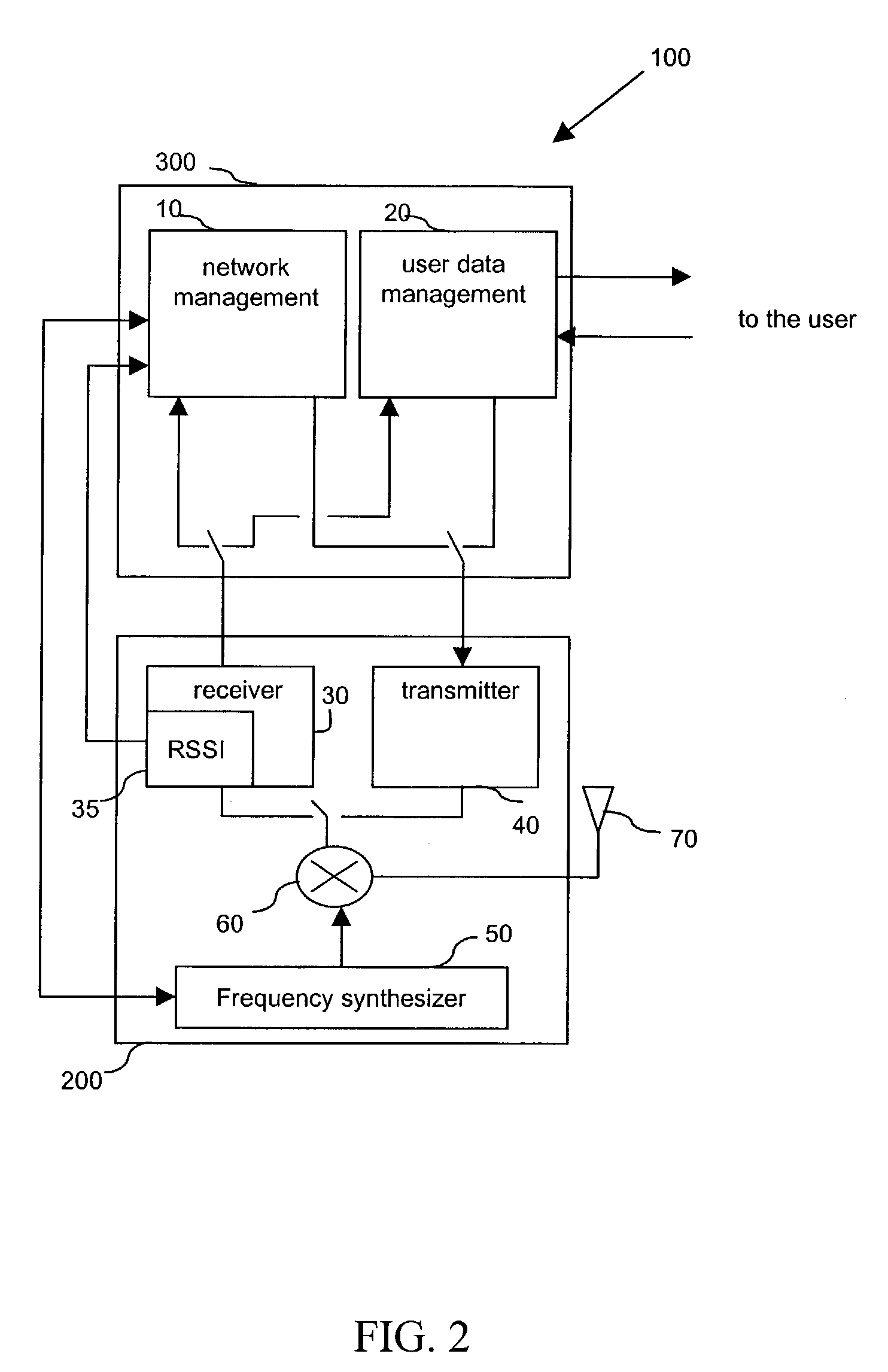Method of communication in a network
- Summary
- Abstract
- Description
- Claims
- Application Information
AI Technical Summary
Benefits of technology
Problems solved by technology
Method used
Image
Examples
Embodiment Construction
[0071]The object of the present invention is to create a beacon channel and thereby a wireless network, at the initiative of the mobile terminal, then to re-attribute this beacon channel to a point of access to the wired network, at the same time as the management of the access to the wireless network.
[0072]In a network such as that of FIG. 1 described above, all the terminals, whether they be mobile terminals or base stations, are capable of transmitting and receiving information over at least one beacon channel, in addition to their minimum capability of receiving or transmitting over a signaling channel, and vice-versa.
[0073]The mobile items of equipment must be capable of measuring a period of time.
[0074]The mobile terminals, as for the access points, possess an authentication system as well as an authentication key. This authentication key is held in a memory. This memory may be pre-loaded by the manufacturer or by a suitable system, as for example in a procedure for terminal—b...
PUM
 Login to View More
Login to View More Abstract
Description
Claims
Application Information
 Login to View More
Login to View More - R&D
- Intellectual Property
- Life Sciences
- Materials
- Tech Scout
- Unparalleled Data Quality
- Higher Quality Content
- 60% Fewer Hallucinations
Browse by: Latest US Patents, China's latest patents, Technical Efficacy Thesaurus, Application Domain, Technology Topic, Popular Technical Reports.
© 2025 PatSnap. All rights reserved.Legal|Privacy policy|Modern Slavery Act Transparency Statement|Sitemap|About US| Contact US: help@patsnap.com



